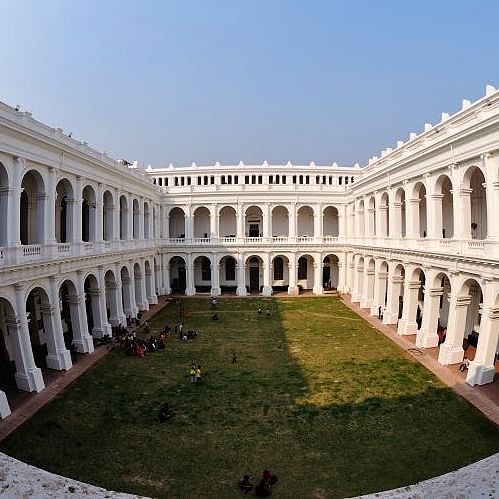The Indian Museum is the largest and oldest museum in the entire Asia-Pacific region. Be prepared to get enthralled by over 100,000 rare exhibits comprising antiques, armour, ornaments, fossils, skeletons, mummies and paintings. From remnants of the Harappan civilisation to Buddha’s ashes to Shah Jahan’s emerald goblet, there are rich histories waiting to be discovered as you walk about the museum.
Spread across three floors and six departments (art, archeology, anthropology, geology, zoology and botany), the museum might be a bit taxing on your feet but your senses are in for a treat. The art section of the Indian Museum occupies the first and second floor of the museum and boasts of an exquisite art collection full of Mughal, Persian, Rajasthani and Deccani miniature paintings. You will also find textiles from Dhaka, Punjab, Murshidabad, Persian carpets. There are porcelain artefacts from China and Japan like wine cups and ivory carved articles as well.
In the archeology section, you will find artefacts dating as far back as the Stone Age and also prehistoric objects from the Harappan and Mohenjodaro civilisation. A rare collection of Indian coins as well as an urn containing the ashes of Buddha can be found in this section. Don’t miss checking out the Gandhara gallery. It tells the story of Lord Buddha’s life through beautiful sculptures and images. Another major attraction in this section is a 4,000-year-old Egyptian mummy. Head to the Geological Section to explore different varieties of precious stones, meteorites, ornamental building stones, minerals, rocks and fossils. Going with little ones in tow? They will love the zoological section with its huge collection of fish, insect, mammal, reptile and bird specimens.
Another interesting section is the Mask gallery located on the 4th floor and is accessible through the Textile and Decorative Art gallery. The gallery exhibits various masks from West Bengal, Orissa, Assam, Karnataka, and also from Bhutan and New Guinea.
Art lovers, the decorative arts section will wow you with some of the most aesthetic creations of craftsmen. Objects that were used either for decoration or as ritualistic objects, such as Royal Glazed Earthenware, huge front portion of a Salin monastery and temple façade of Mandalay showing Burmese art, the front piece of a Kathiawar house, objects made of wood, bone, brass, bronze, copper-ware, silver, ivory, jade, bidri and damascene.


